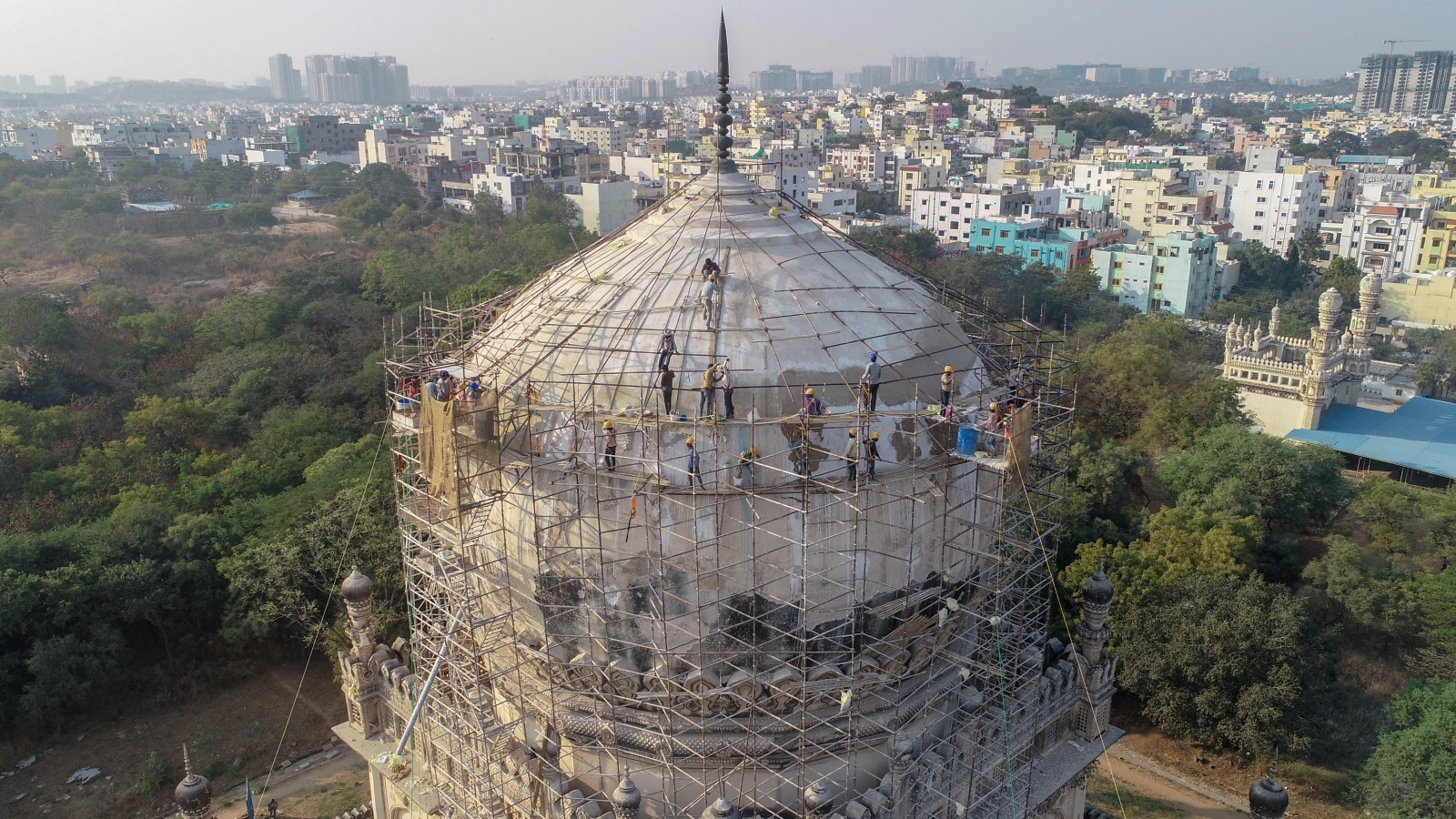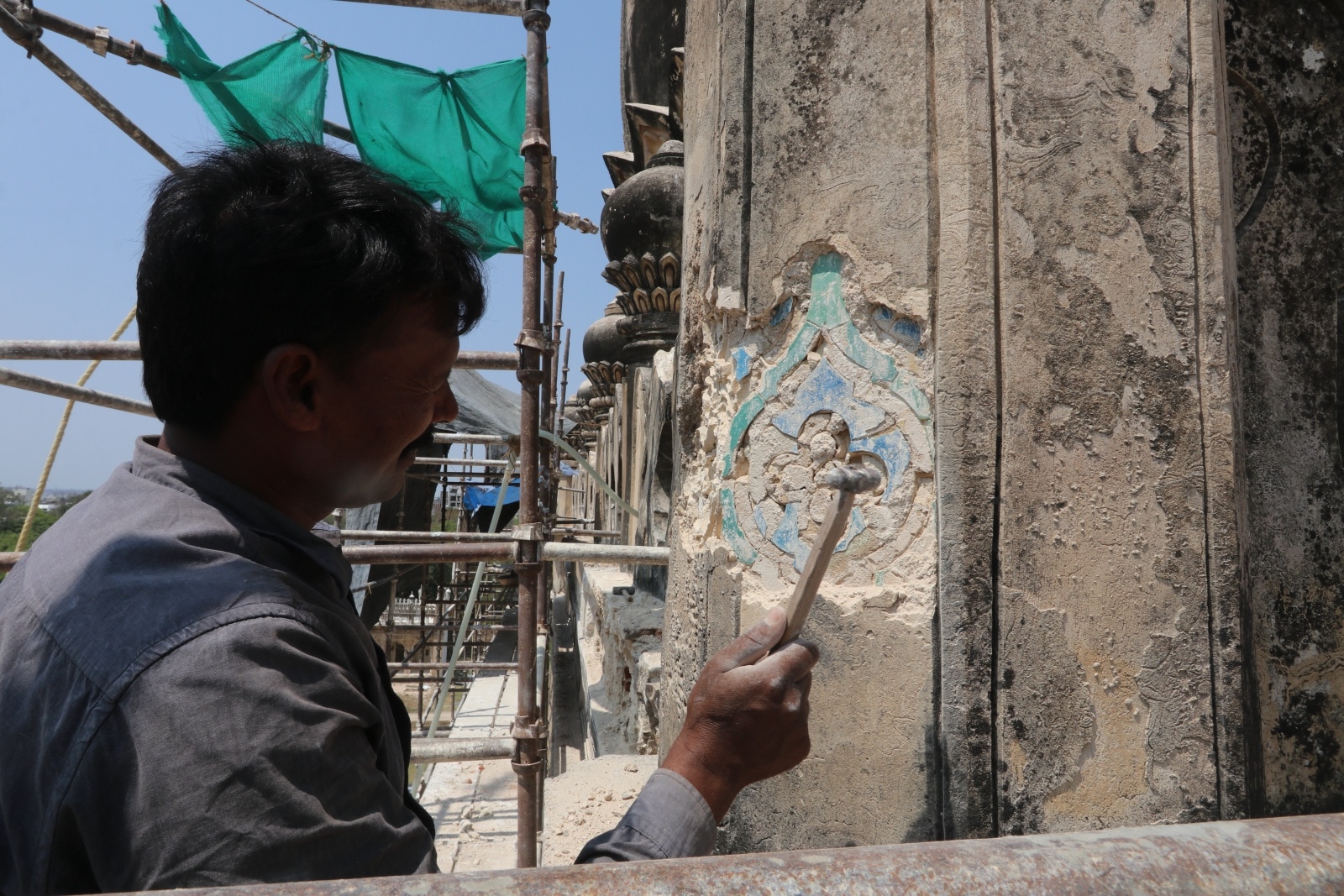Qutb Shahi Heritage Park: Culmination of a decade-long journey of conservation
The Aga Khan Trust for Culture is organizing an exhibition in Delhi that showcases the restoration of the 100-acre Qutb Shahi necropolis in Hyderabad.
 Mausoleum of Muhammad Qutb Shah. (Express Photo)
Mausoleum of Muhammad Qutb Shah. (Express Photo)Written by Samveg Chauhan
A few hundred metres from the Golconda fort in Hyderabad lies the greatest architectural achievement of the Qutb Shahi dynasty—a 100-acre necropolis built over 169 years before the dynasty suffered defeat at the hands of its Mughal contemporaries.
Out of the 100 structures that have been restored after a decade of meticulous conservation work, four Qutb Shahi mausolea stand over 40 metres tall, making their grandeur comparable to the greatest hits of their eventual conquerors — Taj Mahal and Humayun’s Mausoleum, the latter of which was facing continual dilapidation until 2007, before the Aga Khan Trust for Culture (AKTC) joined hands with the Archaeological Survey of India to restore the monument with an authentic and sustainable approach to conservation.
Once the conservation work on Mughal architecture around Nizammudin started to bear fruit, AKTC decided to adopt the Qutb Shahi necropolis, bringing much–deserved attention to historical marvels built by the Mughals’ lesser-known but equally inventive Deccan rivals.
 Plaster repairs and restoration being done on the dome of Abdullah Qutb Shah’s mausoleum. (Express Photo)
Plaster repairs and restoration being done on the dome of Abdullah Qutb Shah’s mausoleum. (Express Photo)
This feat was undertaken by a multi-disciplinary team at AKTC in 2011. The ambitious conservation effort began with prioritising structures that were already in an advanced stage of deterioration or partial collapse. They managed to collect over 500 images from the 1850s onwards for the project.
Ratish Nanda, chief executive of AKTC, said, “A major challenge has been the abuse of the judicial system by vested interests—holding up significant project components such as building a site museum.”
Also known as the ‘Golconda Sultanate,’ the Qutb Shahi dynasty ruled the city of Hyderabad and its surrounding areas for more than a century and a half, adorning it with a uniquely graceful style of architecture—heavy stucco ornamental work and latticed screens. While this style is already present in revered monuments like the Golconda Fort and Charminar, AKTC contends that the dynasty’s most significant architectural ensemble is the Qutb Shahi necropolis, which required major restoration work.
 Remnants of the original tile patterns found on the removal of cement. (Express Photo)
Remnants of the original tile patterns found on the removal of cement. (Express Photo)
This project was finally possible with the support of Tata Trusts, the US Ambassadors Fund for Cultural Preservation, Indigo Reach/ InterGlobe Foundation, and the Consulate of the Federal Republic of Germany, Chennai. To showcase their decade-long journey, AKTC has organised an exhibition, ‘Qutb Shahi Heritage Park, Golconda: Conserving the Royal Necropolis,’ at the Kamaladevi Complex Art Gallery, India International Centre, until October 11.
Touted as a ‘model project’ that can be replicated by other national sites, the conservation process was geared towards restoring the spirit and feeling of the space, emphasising craftsmanship, interpretation and supervision.
 Craftsmen working on punning the external facade of the tomb. (Express Photo)
Craftsmen working on punning the external facade of the tomb. (Express Photo)
The project’s holistic and sustainable approach is perhaps best reflected in the restoration of the Qutb Shahi baolis (step wells). Out of the eight original baolis, six have been discovered, conserved and restored to their original functionality. In the case of Badi Baoli, the mammoth undertaking required over 600 tonnes of stone masonry over three years. One of the primary objectives was to ensure that once functional, the baolis could collect the water required for subsequent conservation works and irrigation for the garden. In 2021, the six step-wells altogether collected over 20 million litres of rainwater.
Part of the process was undoing 20th-century attempts to restore the monument, which had covered its surfaces with cement plaster. On the dome of Muhammad Qutb Shah’s mausoleum, removal of cement plaster uncovered traces of glazed tiles on the dome, minars, columns, and cornice—with easy-to-distinguish original patterns. With tilework now restored, the mausoleum once again displays the emerald sheen it once adorned.
The exhibition will feature a talk by historian and architecture conservator Sajjad Shahid on ‘Cultural Practices of the Qutb Shahis’ on October 4. On October 9, Nanda will give an illustrated lecture on conservation and landscape restoration.
Samveg Chauhan is an intern at The Indian Express.







